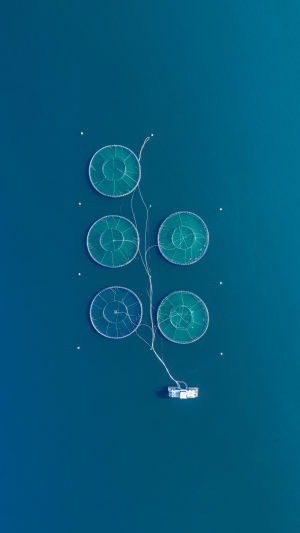Salmon, renowned for its delicate flavor and nutritional benefits, has become one of the most popular fish choices worldwide.
While wild salmon populations face numerous challenges, salmon farming, also known as aquaculture, has emerged as a sustainable solution to meet the growing global demand for this delectable fish.
Let's delve into the fascinating world of salmon farming, exploring the intricacies of this industry and highlighting its sustainable practices.
What is Salmon Farming?
Salmon farming involves the cultivation of salmon in controlled environments such as fish farms or ocean net pens. These controlled environments allow farmers to regulate the water quality, feed, and overall health of the fish, resulting in consistent growth and reduced stress. By farming salmon, we can mitigate the pressures on wild populations and ensure a reliable supply of this prized fish.
Environmental Sustainability:
Salmon farms employ various practices to ensure environmental sustainability. One notable approach is the use of closed containment systems, which significantly reduce the risk of disease transmission to wild populations and prevent the escape of farmed fish into the wild. These systems also enable farmers to monitor and control water quality, minimizing the impact on surrounding ecosystems.
Health and Nutrition:
Salmon farms prioritize the health and welfare of their fish. Specialized diets are formulated to provide the optimal balance of nutrients required for growth and development, ensuring the fish reach their full potential. Regular monitoring and veterinary care are also integral to maintaining fish health. By providing a controlled environment, farmers can minimize the use of antibiotics and other medications, contributing to the production of healthy and safe salmon.
Fish Welfare:
Salmon farmers prioritize the well-being of their fish, recognizing that it not only improves the quality of the product but also aligns with ethical considerations. Farms are designed to provide ample space for the fish to swim, promoting natural behaviors.
Constant monitoring of water quality, oxygen levels, and temperature ensures optimal conditions for the fish. Additionally, farmers employ measures to reduce stress during handling and transportation, ensuring the salmon's welfare from farm to plate.
Traceability and Quality Assurance:
Traceability is a crucial aspect of salmon farming. Each fish can be identified and tracked throughout its lifecycle, from hatchery to harvest. This level of traceability ensures quality assurance and enables consumers to make informed choices about the products they purchase. Stringent regulations and industry standards further contribute to maintaining high-quality standards within the salmon farming industry.
Community and Economy:
Salmon farming plays a vital role in supporting local economies and communities. Farms provide employment opportunities in rural areas, stimulating economic growth. Furthermore, many farms actively engage with the local communities, supporting educational initiatives, and participating in environmental conservation efforts. This collaboration fosters a positive relationship between salmon farming and the communities it operates in.
Salmon farming represents a sustainable and responsible approach to meeting the global demand for this highly sought-after fish. By employing environmentally friendly practices, prioritizing fish welfare, and ensuring traceability and quality, the industry has become a significant contributor to the economy while reducing pressure on wild salmon populations.
As consumers, we can support sustainable salmon farming by making informed choices and recognizing its positive impact on our planet.





